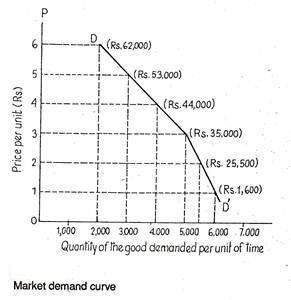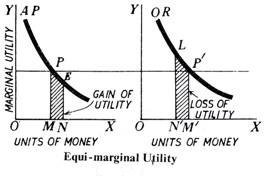Listing Agreement in SEBI
Listing Agreement is the basic document which is executed between companies and the Stock Exchange when companies are listed on the stock exchange. The main purposes of the listing agreement are to ensure that companies are following good corporate governance. The Stock Exchange on behalf of the Security Exchange Board of India ensures that companies follow good corporate governance. The Listing Agreement comprises of 54 clauses stating corporate governance, which listed companies have to follow, failing which companies have to face disciplinary actions, suspension, and delisting of securities. The companies also have to make certain disclosures and act by the clauses of the agreement.
Features of the regulations are as follows:
- Chapter II of the Regulation provides for the guiding principles governing disclosure and obligations of listed companies. The chapter provides for the principles for the listed entities for periodic disclosure and corporate governance followed by the companies.
- Chapter III of the Regulations provides for a common obligation for listed companies, in the matter of compliance, the appointment of a compliance officer, filing on the electronic platform, etc.
- Chapter IV to IX provides for the obligations applicable to specific securities incorporated in different chapters.
- Chapter X to XI provides for the responsibilities to compliance given to stock exchanges to regulate, monitor and take action for compliance measures.
Differences between Listing Regulation and Listing Agreement
Changes made within the listing agreement:
Change for the separate period of the transmission of securities: The listing agreement provides for the transfer or transmission of securities and issue of the certificate within 15 days from the date of such receipt of a request for transfer. While the listing regulation provides for the transfer and issue of the certificate within 15 days from the date of such receipt of request for transfer provided that the listed entity shall ensure that the transmission requested is processed for the securities held in the dematerialised mode and physical mode within 7 days and 21 days respectively, after receipt of the specified documents.
Change made regarding the requirement of sending notice to other stock exchange for the close transfer of books: In the listing agreements, while closing the transfer of books, the companies have to send notice to the concerned stock exchange as well as other stock exchanges in an advance of 7 working days. While in the new regulation notice is to be given to the concerned stock exchange in an advance of 7 working days.
Extension of period for the disclosure to stock exchange: In the listing agreement, the disclosure regarding all the dividends or cash bonuses recommended or declared or the decisions to pass any dividends or interest paid and date on which dividends shall be paid/dispatched, the decision on buyback of securities is to be made within 15 minutes of the Board Meeting. While the listing regulation provides for the disclosure to be made within 30 minutes of the board meeting regarding all the dividends or cash bonuses recommended or declared or the decisions to pass any dividends or interest paid and date on which dividends shall be paid/dispatched, the decision on buyback of securities.
In the listing agreement, there is a provision of promptly notifying the stock exchange of short particulars on any increase of capital whether by the issue of bonus shares through capitalization, or by the way of right shares to be offered to the shareholders or debenture holder, or in any other way. Short particulars of the reissue or shares or securities held in reserve for future issue or the creation in any form or manner of new shares or securities or any rights, privileges or benefits to subscribing to, short particulars of any alterations of capital, including calls. While the listing regulation provides for at least 30 minutes of the closure of board meeting for, promptly notifying stock exchange of short particulars of any increase of capital whether by issue of bonus shares through capitalization, or by the way of right shares to be offered to the shareholders or debenture holder, or in any other way. Short particulars of the reissue or shares or securities held in reserve for a future issue or the creation in any form or manner of new shares or securities or any rights, privileges or benefits to subscribing to, short particulars of any alterations of capital, including calls.
It has been mentioned in the listing agreement of prior intimidation of at least seven days in which the final result shall be considered. In the listing regulations, a five-day prior notice is to be given when the financial result is to be considered by the stock exchange about the board meeting.
The listing agreement provides for the provision ensuring that the RTA and/or the In-house Share Transfer facility, as the case may be, produces a certificate from a PCS within 1 month of the end of each half of the financial year, certifying that all certificates have been issued within 15 days of the date of lodgment for transfer, sub-division, consolidation, renewal, exchange or endorsement of calls/allotment monies, and a copy of the same shall be made available to the SE within 24 hours of the receipt of the certificate by the Company. While the listing regulation provides for ensuring that the share transfer agent and/or the in-house share transfer facility, as the case may be, produces a certificate from a practicing company secretary within 1 month of the end of each half of the financial year, certifying that all certificates have been issued within 30 days of the date of lodgments for transfer, sub-division, consolidation, renewal, exchange or endorsement of calls/allotment monies and ensures that certificate is filed with the SE simultaneously.
Provision wherein MD or the WTD appointed to provide compliance in the listing agreement has been given, whereas in the listing regulation, the CEO, and the CFO have to provide a compliance certificate to the board of directors.
New provisions have been added in the listing regulations which were not there in the listing agreement, regarding the preservation of documents. Two types of documents have to be maintained; one document is to be permanently preserved while the second record is to be reserved for the period of not less than eight years after the completion of the particular transaction.

